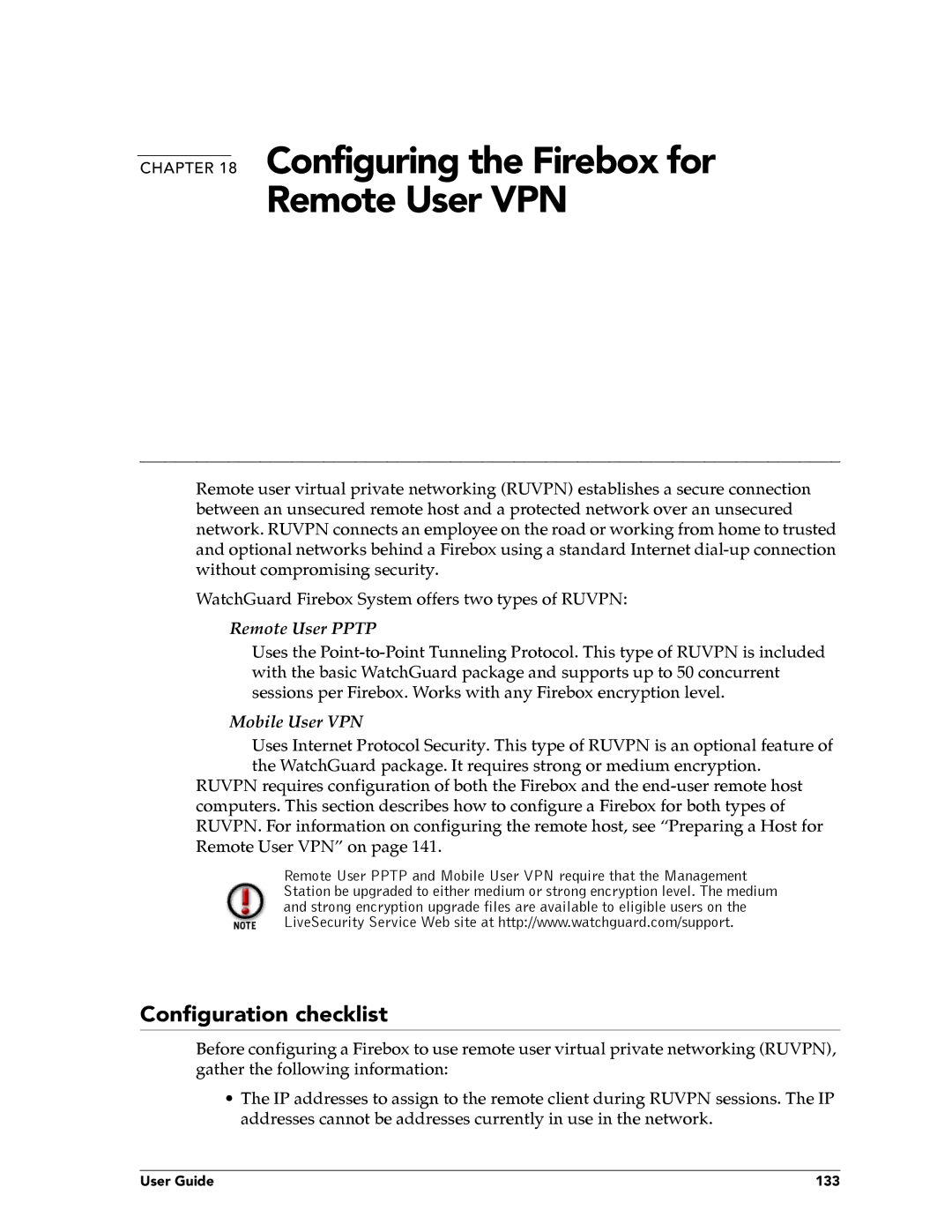
CHAPTER 18 Configuring the Firebox for
Remote User VPN
Remote user virtual private networking (RUVPN) establishes a secure connection between an unsecured remote host and a protected network over an unsecured network. RUVPN connects an employee on the road or working from home to trusted and optional networks behind a Firebox using a standard Internet
WatchGuard Firebox System offers two types of RUVPN:
Remote User PPTP
Uses the
Mobile User VPN
Uses Internet Protocol Security. This type of RUVPN is an optional feature of the WatchGuard package. It requires strong or medium encryption.
RUVPN requires configuration of both the Firebox and the
Remote User PPTP and Mobile User VPN require that the Management Station be upgraded to either medium or strong encryption level. The medium and strong encryption upgrade files are available to eligible users on the LiveSecurity Service Web site at http://www.watchguard.com/support.
Configuration checklist
Before configuring a Firebox to use remote user virtual private networking (RUVPN), gather the following information:
•The IP addresses to assign to the remote client during RUVPN sessions. The IP addresses cannot be addresses currently in use in the network.
User Guide | 133 |
